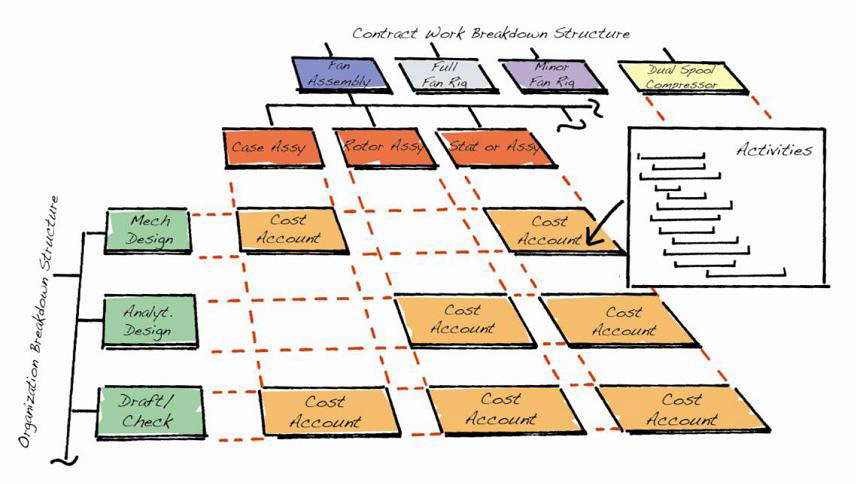Understanding breakdown structures in project management
Breakdown structures are central to the practice of project management and have their origins in the industrial revolution. In his book The Wealth of Nations, Adam Smith advocated breaking the production of goods into tiny tasks that can be undertaken by people following simple instructions—”Why hire a talented pin maker when ten factory workers using machines and working together can produce a thousand times more pins than the artisan working alone?”
Similar ideas underpinned Newtonian physics. Newton saw the world as a harmonious mechanism controlled by a universal law. Applying scientific observations to parts of the whole would allow understanding and insights to occur and eventually a complete understanding of the ‘clockwork universe’.
These ideas fed into scientific management. Scientific management focuses on worker and machine relationships and assumes productivity can be increased by increasing the efficiency of production processes. In 1911 Frederick Taylor, known as the Father of Scientific Management, published Principles of Scientific Management in which he proposed work methods designed to increase worker productivity.
This ‘reductionist’ approach to complex endeavours, supported by the division of labour is central to scientific management as well as to many modern project management processes built around ‘breakdown structures’. [For more on this, see ‘The Origins of Modern Project Management‘.]
Some of the types of Breakdown Structure in use today include:
- WBS (Work Breakdown Structure)
- OBS (Organisational Breakdown Structure)
- RBS (Resource Breakdown Structure)
- PBS (Product Breakdown Structure)
- RBS (Risk Breakdown Structure)
- CBS (Cost Breakdown Structure)
Their functions can be briefly defined as follows:
Work Breakdown Structure (WBS)
A work breakdown structure is a tool used to define and group a project’s discrete work elements (or tasks) in a way that helps organise and define the total work scope of the project It provides the framework for detailed cost estimating and control along with providing guidance for schedule development and control.
Organisation Breakdown Structure (OBS)
The organisation(al) breakdown structure defines the organisational relationships and is used as the framework for assigning work responsibilities. The intersection of the OBS and WBS defines points of management accountability for the work called Control (or Cost) Accounts.

Resource Breakdown Structure (RBS)
The resource breakdown structure is a standardised list of personnel resources related by function and arranged in a hierarchical structure to facilitate planning and controlling of project work.
Product Breakdown Structure (PBS)
A product breakdown structure is an exhaustive, hierarchical tree structure of components that make up an item, arranged in whole-part relationship. The PRINCE2 project management method mandates the use of product based planning, part of which is developing a product breakdown structure. In practice there is very little difference between a PBS and a WBS, both systems define the full extent of the work required to complete the project.
Risk Break Down Structure (RBS)
The risk breakdown structure is a hierarchically organised depiction of the identified project risks arranged by risk category. The risks are placed into the hierarchical structure as they are identified, and the structure is organised by source so that the total risk exposure of the project can be more easily understood, and planning for the risk more easily accomplished.
Cost breakdown structure (CBS)
The cost breakdown structure classifies the costs within project into cost units/cost centres and cost elements/cost types. The establishment of a cost structure aids efficient cost planning, controlling, and the introduction of measures to reduce costs.
But do all of these breakdowns really help? Traditional project management is based on these concepts. However emerging disciplines, particularly complexity theory, suggest that self organising systems such as a project team cannot be understood by studying the individual parts of the team.
As the writer Douglas Adams once said: “I can imagine Newton sitting down and working out his laws of motion and figuring out the way the universe works and with him, a cat wandering around. The reason we had no idea how cats worked was because, since Newton, we had proceeded by the very simple principle that essentially, to see how things work, we took them apart. If you try and take a cat apart to see how it works, the first thing you have in your hands is a non-working cat.”
The way complex entities work cannot be understood by breaking them down into parts. Even at the simplest level, studying a fish cannot explain how a shoal of fish work; at a complex level understanding a project task in isolation will not explain the dynamics of a major project and its team of resources.
My personal view is the ‘breakdowns’ are still helpful ways to develop insights – but they no longer offer viable answer—if they ever did. The path to increasing project success lays in the way the insights are interpreted and used within the complexity of a dynamic project delivery system.

